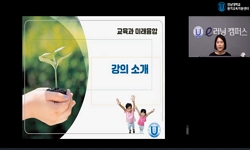Background: Some young adults with native liver after Kasai portoenterostomy (KPE) for biliary atresia (BA) have a long survival period. However, a considerable number of them finally require liver transplantation (LT) due to various BA-associated com...
http://chineseinput.net/에서 pinyin(병음)방식으로 중국어를 변환할 수 있습니다.
변환된 중국어를 복사하여 사용하시면 됩니다.
- 中文 을 입력하시려면 zhongwen을 입력하시고 space를누르시면됩니다.
- 北京 을 입력하시려면 beijing을 입력하시고 space를 누르시면 됩니다.
Liver transplantation for young adult patients with post-Kasai portoenterostomy biliary atresia: Analysis of Korean Organ Transplantation Registry database
한글로보기https://www.riss.kr/link?id=A109759810
- 저자
- 발행기관
- 학술지명
- 권호사항
-
발행연도
2022
-
작성언어
English
- 주제어
-
자료형태
학술저널
-
수록면
43-47(5쪽)
- DOI식별코드
- 제공처
-
0
상세조회 -
0
다운로드
부가정보
다국어 초록 (Multilingual Abstract)
Background: Some young adults with native liver after Kasai portoenterostomy (KPE) for biliary atresia (BA) have a long survival period. However, a considerable number of them finally require liver transplantation (LT) due to various BA-associated complications. This study aimed to analyze the outcomes of LT in adult patients with post-KPE BA using Korea Organ Transplantation Registry (KOTRY) database. Methods: This study was a retrospective analysis of multi-center data using KOTRY database, including 14 adult patients who underwent LT in six institutions during a 7-year period from January 2014 to December 2020. Results: All 14 patients underwent KPE at around 1 year of age. The mean ages at LT were 25.0±5.9 years. The mean model for end-stage liver disease score was 13.5±4.6. The main reasons for LT were advanced liver cirrhosis in nine and intractable cholangitis in five. All patients received living-donor LT. The mean graft-to-recipient body weight ratio was 1.21%±0.31%. All 14 patients are currently alive during the mean follow-up period of 32.3±17.1 months. Adult BA patients were being cared for by pediatric gastroenterologists in 3 institutions, by adult gastroenterologists in 1 institution, and undetermined in 2 institutions. Conclusion: Young adult patients with BA are a unique group of patients requiring specialist care during the transition from pediatric to adult services. Living donor LT has been the main type of LT for these patients because of donor shortage in Korea. Similar to our previous single-center study, in the present study, LT outcomes in young adult BA patients were excellent. Therefore, LT should be considered in patients showing serious BA-associated complications.
동일학술지(권/호) 다른 논문
-
- The Korean Liver Transplantation Society
- Dong-Hwan Jung
- 2022
-
- The Korean Liver Transplantation Society
- Jung-Man Namgoong
- 2022
-
- The Korean Liver Transplantation Society
- Shin Hwang
- 2022
-
- The Korean Liver Transplantation Society
- Soo Young Oh
- 2022




 ScienceON
ScienceON





